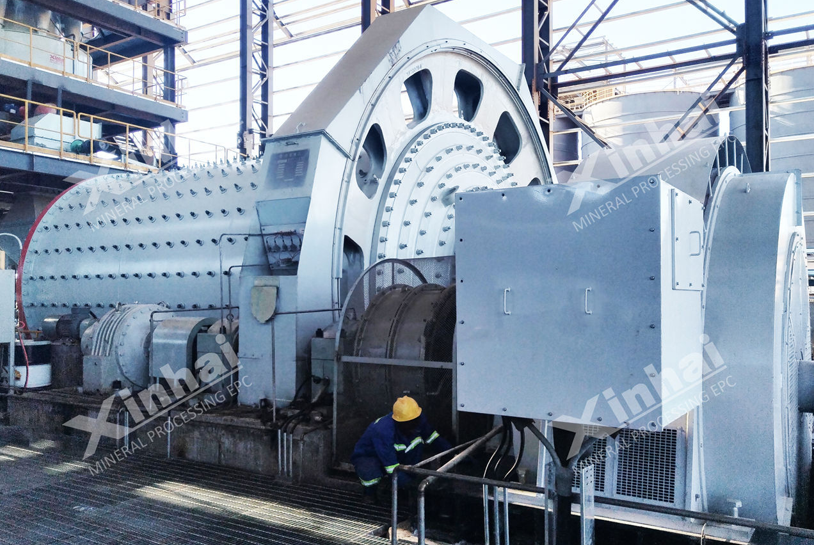Kaolin, as an important non-metallic mineral resource, is widely used in rubber, plastic, papermaking and other industrial fields. Its ore dressing process is mainly divided into dry and wet processes.
The dry process is simple and economical. The ore is first crushed to 25.4mm by a hammer crusher, and then further crushed to 6.35mm, and then the moisture is reduced from about 20% to 10% by hot air in a cage mill. Then, it is ground by a blown Raymond mill equipped with a centrifugal separator and a cyclone separator to remove most of the sand. The product is often used as a low-cost filler in industry, but the brightness is poor when used as a filler in the papermaking industry. If the whiteness of the product is required to be high, dry iron removal is also required. This process omits the dehydration and drying process, has a short process and low cost, and is suitable for arid areas, but it is difficult to obtain high-purity kaolin.

The wet process removes impurities through hydraulic classification, flotation, selective flocculation, magnetic separation, chemical bleaching and other steps. The mud slurry is first desanded and then divided into coarse and fine grades. The fine-grained ore is removed from the iron and titanium impurities by a high gradient magnetic separator. After leaching, alum is added to promote the coagulation of clay minerals for dehydration. The bleached kaolin is dehydrated by a high-speed centrifuge, redispersed into a slurry, spray-dried to make a dry product, and part of the dry product is mixed with the slurry and transported to the paper mill. The unselected product has a low whiteness, and a variety of processes are often used to improve the whiteness.
In kaolin sorting, a high gradient magnetic separator can remove hematite with weaker magnetism. In recent years, superconducting magnetic separators have also been used, which have low energy consumption, strong field, fast magnetic rise speed and short demagnetization time. The reciprocating spiral superconducting magnetic system tested in the UK can operate continuously.
The flotation operation aims to remove titanium impurities in kaolin. Because the impurity particles are fine, a carrier flotation process is often used. The carrier mineral is generally calcite or silica sand, and the amount used is 10% to 20% of the weight of kaolin. Although flotation can remove anatase and alum, it has the disadvantages of requiring a large amount of chemicals, being effective only at low pulp concentrations, requiring the removal of the ore carrier, and having harmful residual substances.
© 2021 Yantai KZ Mining Processing Technology & Equipment Inc.